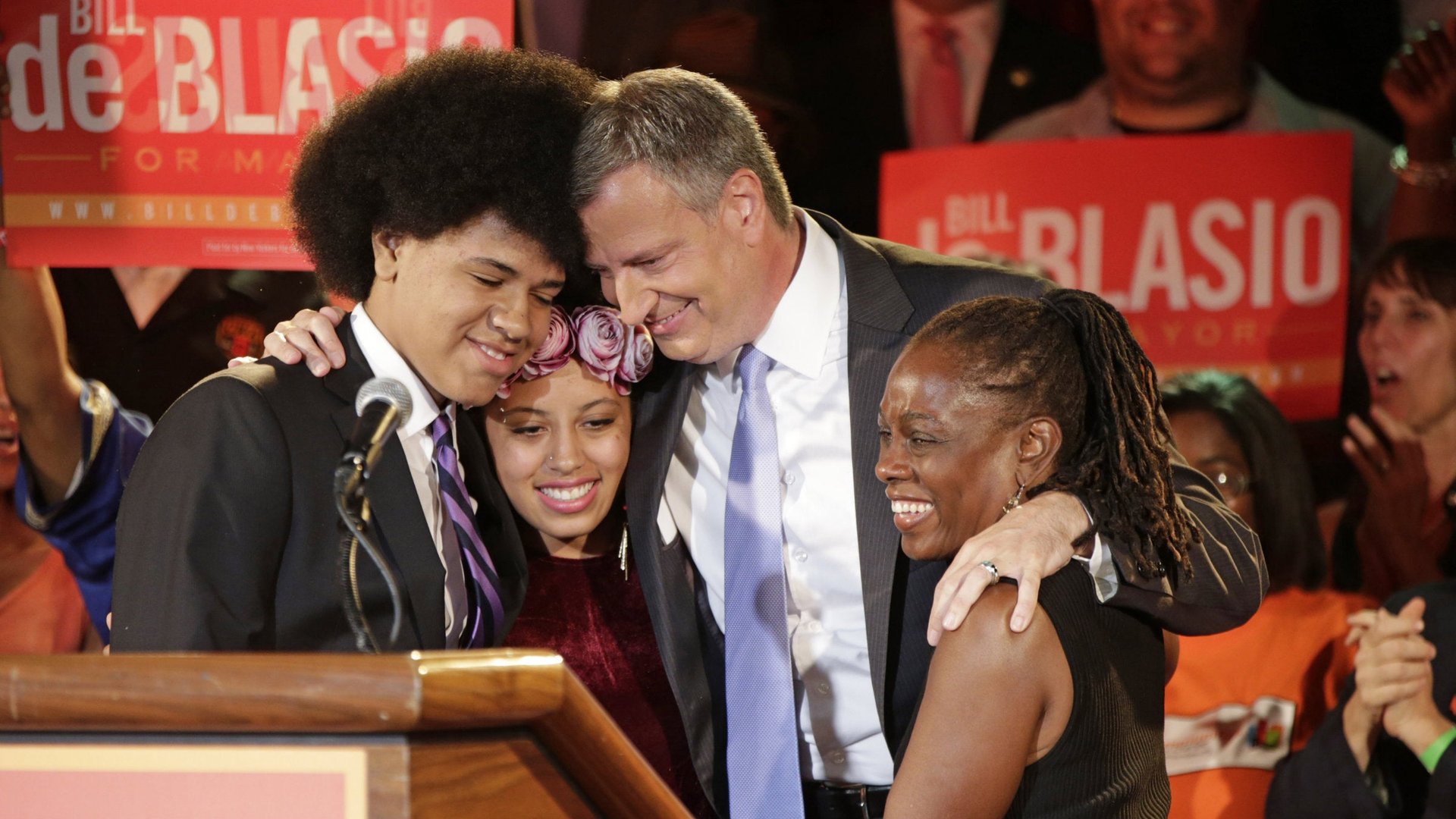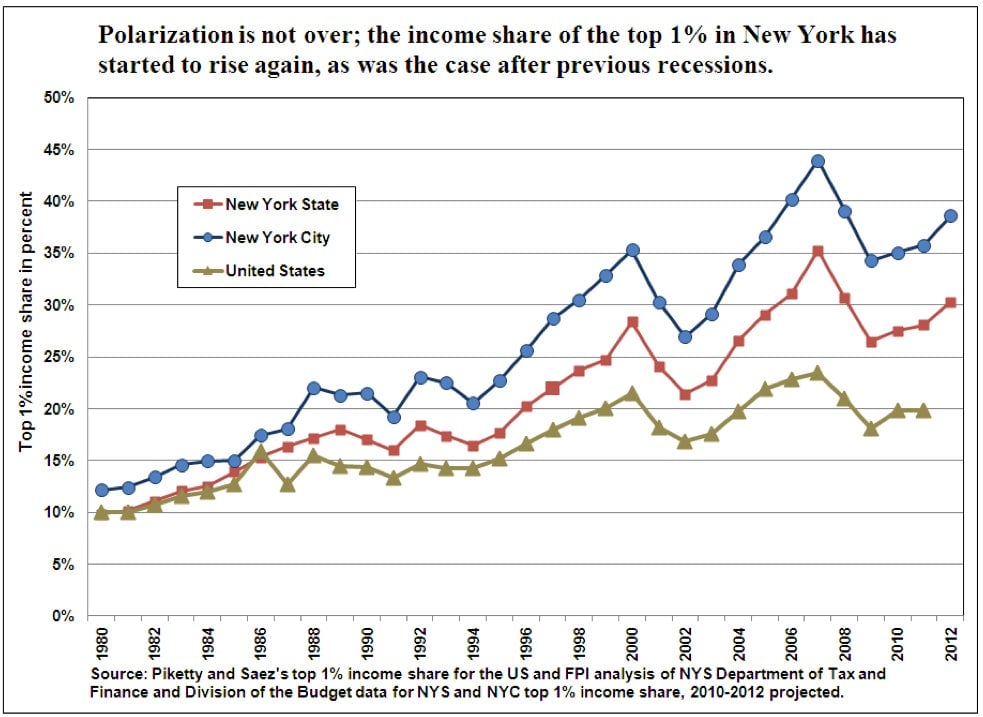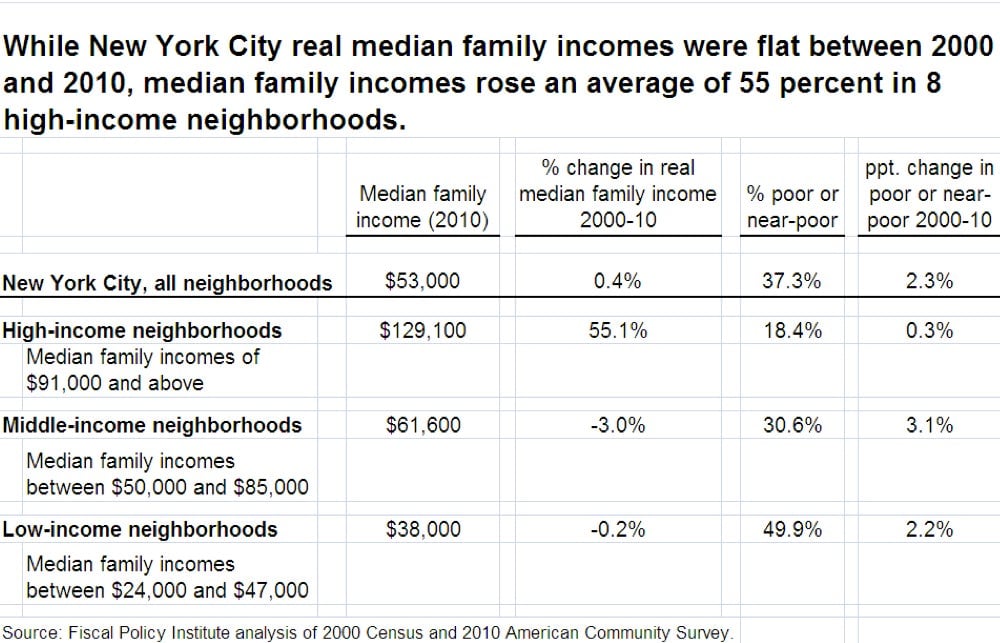These 4 charts explain why Bill de Blasio won over New Yorkers
NEW YORK—Until just a few weeks ago, nobody thought Bill de Blasio had a chance. He is way too liberal for the New York City we’ve become, the one that has eradicated crime, busted unions, and put porn shops and squeegee guys out of business.


NEW YORK—Until just a few weeks ago, nobody thought Bill de Blasio had a chance. He is way too liberal for the New York City we’ve become, the one that has eradicated crime, busted unions, and put porn shops and squeegee guys out of business.
Yet somehow last night, de Blasio won the Democratic primary to be mayor of America’s largest city. (It still remains unclear if he secured 40% of the votes, which would be enough to avoid a runoff, but he’s very close.)
How did he get this far?
While New York City rebounded from the recession faster and stronger than the rest of the state and country, a stubborn wealth gap persists. Granted, much of the city looks richer, cleaner, safer than 20 years ago before more moderate mayors took its helm. But there’s clear discontent over the concentration of that progress and those riches at the top of the income pyramid.
The city’s former chief economist James Parrott, now with the liberal think tank Fiscal Policy Institute, offers these charts:

Notably, the rich are getting richer, and New York City’s the richest. But the city also ranks highest in the US on another gauge—the measure of inequality known as the Gini coefficient:

For all its vastness, New York is a city of neighborhoods. Politicians know this and make their appeal block by block, church to synagogue. De Blasio tapped into ire over this uneven growth across the city. People are working harder, but earning less, Parrott notes:

The Great Recession was painful for much of the US, but for the poor came an even starker reality: the absence of a safety net.

The cornerstone of de Blasio’s campaign has been a “tale of two cities” narrative. Twice in his victory speech last night, he mentioned “luxury condos replacing community hospitals” and took many, many more jabs at the wealthy. He presented himself as the progressive alternative to two decades of billionaire mayor Michael Bloomberg and his predecessor, iron-fisted control freak Rudy Giuliani.
De Blasio’s personal story cuts across the classes and demographics of New York City. He’s the son of a single mother whose father left the family. His wife is black and once identified as a lesbian; their mixed-race children featured prominently in campaign ads. De Blasio lives in brownstone Brooklyn and sends his kids to public school. His campaign’s block party last night served lobster rolls.
Expect other candidates in upcoming elections around the country to take a play from de Blasio’s book … or more likely, Dickens‘. (In a mayoral debate earlier this week, Charlotte Golar Richie also described Boston as a “tale of two cities.”) Last night’s results signal a political shift is underway and that recent efforts have failed to kill off that oldest of institutions: the New York City liberal.